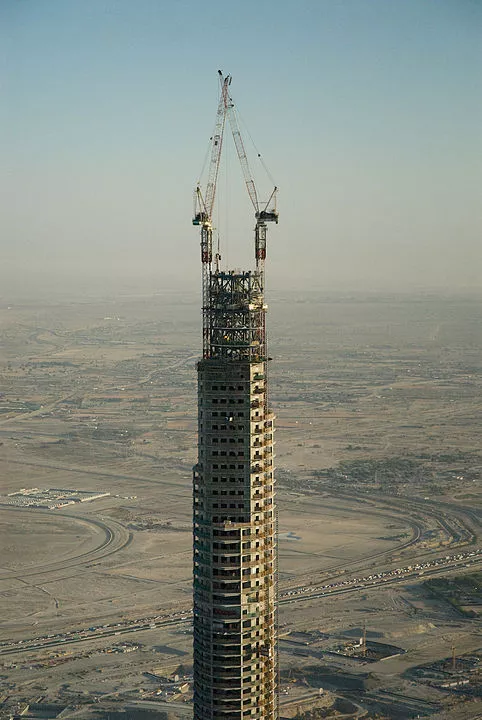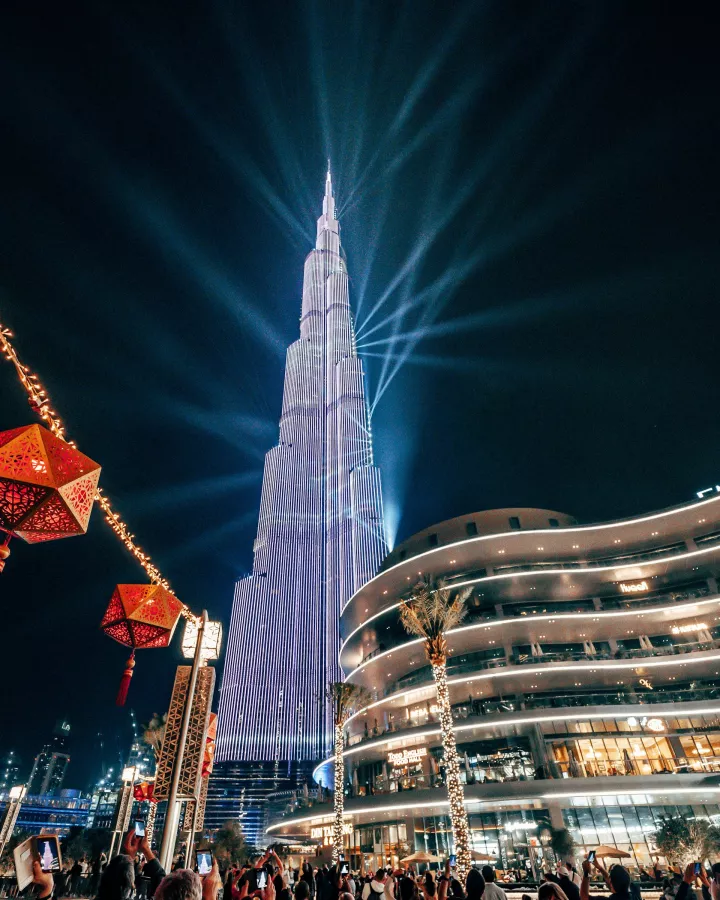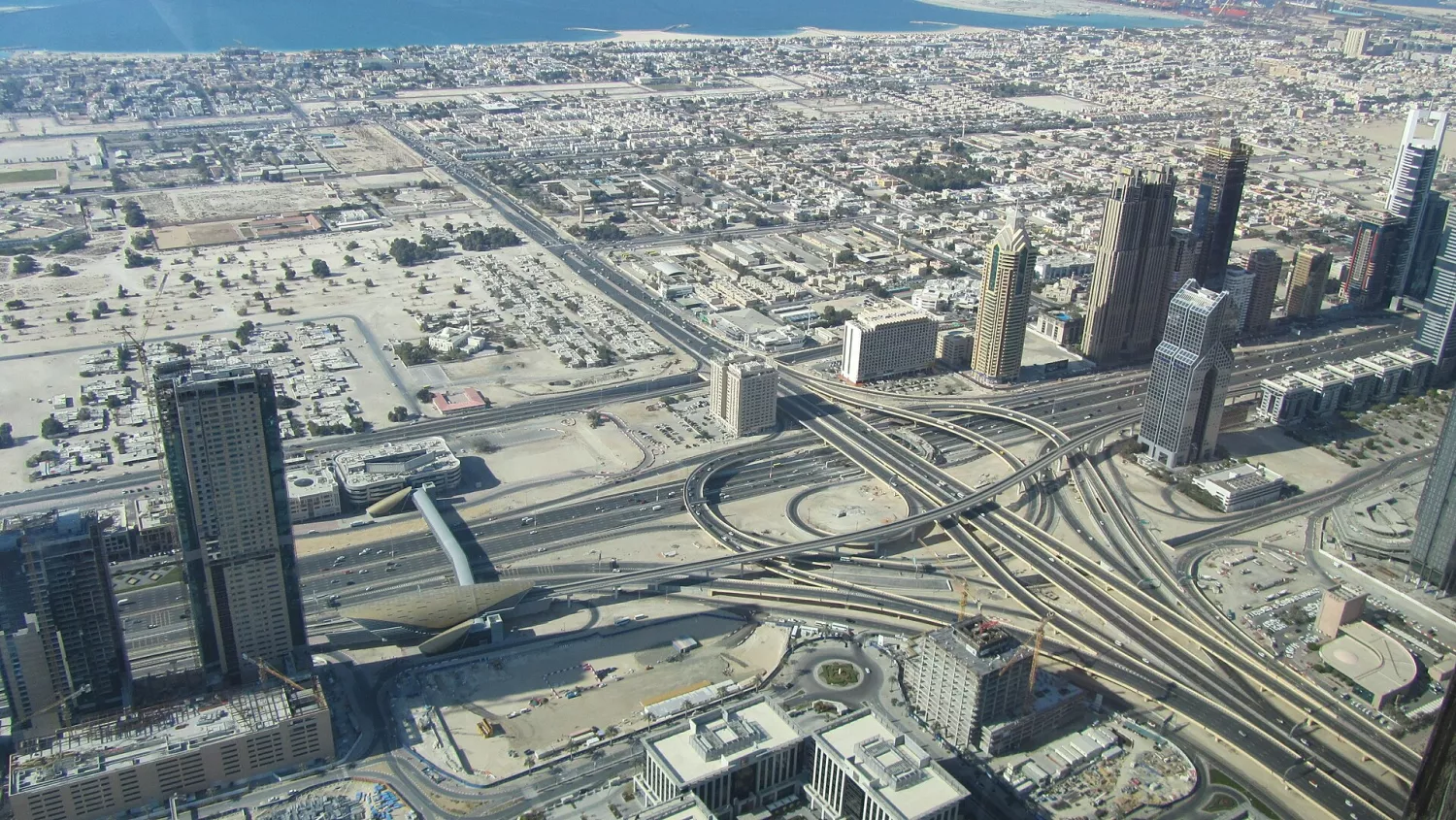Fascinating Insights: Exploring the Facts and Curiosities of the Burj Khalifa
The Burj Khalifa, previously known as the Burj Dubai, stands as an iconic symbol of architectural magnificence in the heart of Dubai, United Arab Emirates. As the world's tallest structure, its silhouette dominates the skyline, reaching an awe-inspiring height of 829.8 meters (2,722 feet) with a roof height of 828 meters (2,717 feet). Since its completion in 2009, the Burj Khalifa has reigned as the pinnacle of human engineering and innovation, surpassing its predecessors to claim the title of the tallest building globally. Designed by a team led by Adrian Smith of Skidmore, Owings & Merrill, its distinctive Y-shaped floor geometry and buttressed central core not only contribute to its striking appearance but also optimize space for residential and hotel purposes.
In this article, we present the remarkable facts and curiosities surrounding this architectural marvel. From its groundbreaking construction techniques to its record-breaking feats, we explore the intricacies and wonders that make the Burj Khalifa a true engineering masterpiece.
The Burj Khalifa is the tallest building in the world, reaching over 828 meters (2,716.5 feet) with more than 160 stories.
It holds various records, including being the tallest free-standing structure globally and having the highest number of stories.
Its elevator system boasts the tallest service elevator and the one with the longest travel distance worldwide.
The building's materials are astounding, with the concrete weighing as much as 100,000 elephants and the aluminum equivalent to five A380 aircraft.
A staggering 22 million man-hours and massive amounts of concrete and steel rebar were required for its completion.
The Burj Khalifa's design, resembling the Hymenocallis flower, is both innovative and awe-inspiring.
It sets records in multiple categories, including tallest existing structure, freestanding structure, and skyscraper to the top of the spire.
The tower's plumbing system is extensive, with 100 km of pipes supplying water and 213 km serving the fire emergency system.
Its air conditioning system, with peak cooling equivalent to 13,000 short tons of melting ice per day, is remarkably efficient.
Cleaning the Burj Khalifa's vast expanse of glass windows is a monumental task, requiring specialized equipment and months to complete.
The Burj Khalifa boasts the highest outdoor observation deck globally, offering breathtaking views.
Its elevator system includes the longest single-running elevator, reaching 140 floors with a speed of 10 meters per second.
At its peak of construction, an astounding 12,000 workers labored on the building daily.
The tip of the Burj Khalifa's sphere is visible from up to 95 kilometers away, a testament to its height.
It holds the record for the highest installation of an aluminum and glass façade, standing at 512 meters.
The tower features the world's highest restaurant, At.mosphere, located on the 122nd floor.
To clean its 24,348 windows, the building employs an intricate system of tracks and cradles, along with unmanned machines for higher tiers.
Residents living above the 80th floor of the Burj Khalifa must wait an extra two minutes to break their Ramadan fast, while those above the 150th floor wait an additional three minutes.
Constructed by Samsung C&T, the same company involved in building the Petronas Twin Towers and Taipei 101, the Burj Khalifa was a joint venture with BESIX from Belgium and Arabtec from the UAE.
The primary structure of the Burj Khalifa is reinforced concrete, utilizing an innovative high-pressure trailer concrete pump created specifically for the project by Putzmeister.
Over 330,000 cubic meters of concrete and 55,000 tonnes of steel rebar were used in the construction, totaling 22 million man-hours.
The foundation of the Burj Khalifa is supported by 192 piles, each 1.5 meters in diameter and buried over 50 meters deep, designed to withstand the building's weight of approximately 450,000 tonnes.
Special mixes of concrete were developed to withstand the extreme pressures of the building's weight and the high temperatures of the Persian Gulf, with testing conducted to ensure durability.

Aerial closeup of Burj Khalifa under construction in March 2008 - Aheilner, CC BY-SA 4.0, via Wikimedia Commons
To prevent cracking, concrete was poured at night during the summer months, when temperatures were cooler and humidity higher, with ice added to the mixture for better curing.
The Burj Khalifa has been used for several authorized and unauthorized BASE jumping stunts, including a world record-breaking jump from a crane-suspended platform attached to the 160th floor.
Highly experienced French BASE jumpers Vince Reffet and Fred Fugen broke the Guinness world record for the highest BASE jump from a building by leaping from a specially designed platform at the pinnacle of the Burj Khalifa.
Alain "Spiderman" Robert scaled the outside of the Burj Khalifa in 2011, using a rope and harness to comply with safety laws.
The Burj Khalifa's outdoor observation deck, named At the Top, opened on the 124th floor, offering stunning views and featuring an electronic telescope for augmented reality viewing.
The observation deck was temporarily closed in 2010 due to power-supply problems causing an elevator to become stuck between floors, trapping tourists for 45 minutes.
When conditions are favorable, such as during low tide and high visibility, the shores of Iran, approximately 153 kilometers away, are visible from the top of the skyscraper.









